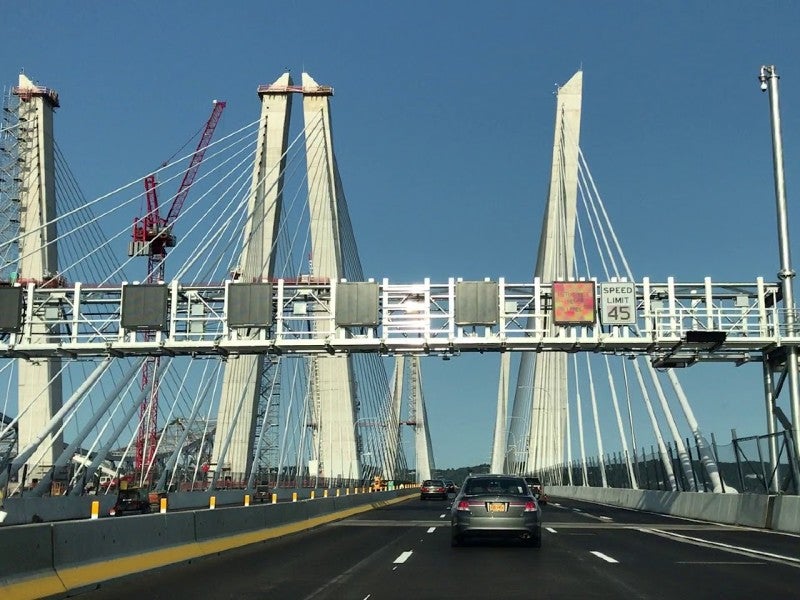
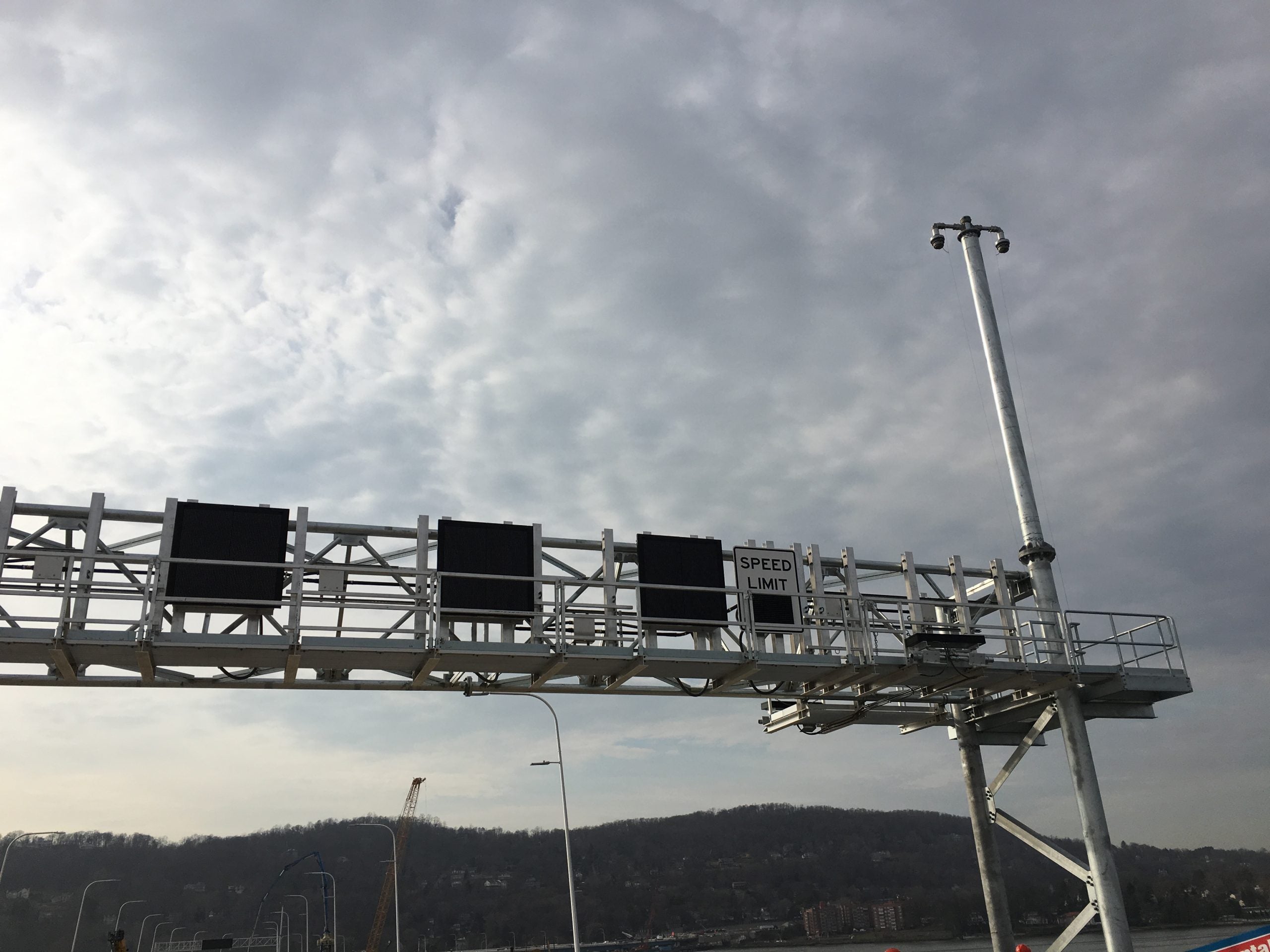
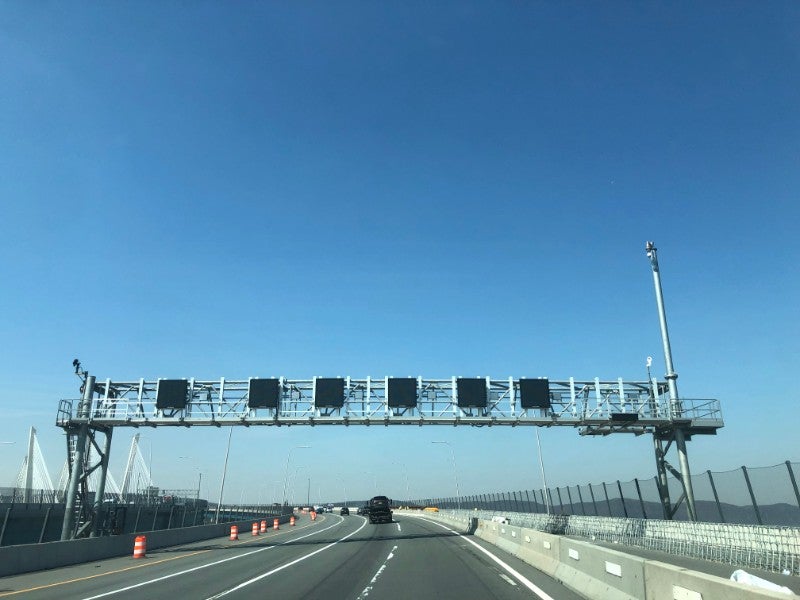
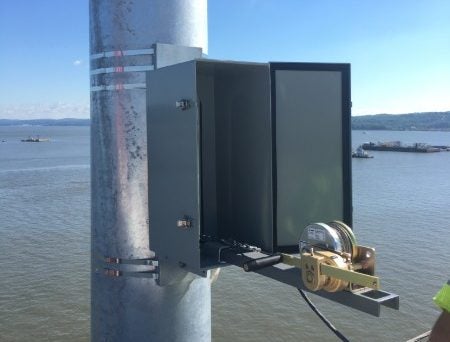
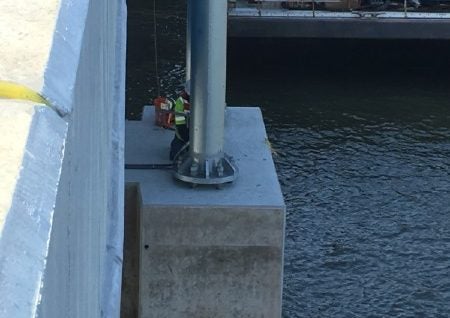
When an innovative solution to minimise lane closures and bucket trucks on the new Tappan Zee Bridge (formally known as the Governor Mario M. Cuomo Bridge) was needed, MG Squared answered the call. More than 60 custom-designed camera lowering devices are in operation on this remarkable structure spanning the Hudson between Tarrytown and Nyack New York just north of New York City. This project highlights, once again, how the team at MG Squared can improve surveillance camera maintainability while boosting camera efficiency and overall safety.
MG Squared became involved with engineering these custom solutions four years before the first car drove over the new bridge. What is unique about this specific project is that it required three different mounting customisations that had never been done before anywhere in the world.
MG Squared prides itself on its ability to innovate. It was MG Squared who introduced to the world in 1996 the first lowering device for multi-function cameras at the ITS World Congress in Orlando, Florida. MG Squared was the obvious choice to find a solution for the most challenging camera maintenance issues presented with this high volume, high tech bridge. The MG Squared team conducted numerous on-site visits before, during and after construction to ensure the best solutions could be integrated properly. Today, we have proven deployments that help minimise congestion during camera maintenance, improve worker safety and ultimately reduce maintenance costs for these critical surveillance cameras.
Integrated tower-mounted camera lowering device
The first unique application is an integrated tower-mounted lowering device. Tappan Zee Corporation (TZC) understood they had a need to place cameras on the concrete superstructure of the bridge itself. However, how would they efficiently conduct maintenance on cameras on the outside of the superstructure 125ft above the water line?
Enter the MG Squared camera lowering devices. The MG Squared team was able to coordinate with TZC to design a system where the winch box (the location where you operate the lowering and raising of the camera) was placed on a platform inside of the superstructure. Cabling was run through pre-set piping in the superstructure that was installed when it was built. Using a guide wire system, the camera could then be lowered to the pier cap at water level. Problem solved with the MG2 camera lowering device.
Gantry-mounted lowering device
The second unique application is a gantry-mounted lowering device. TZC had designed gantries that would be installed at different locations along the roadway. These would hold anything from video message boards to variable speed limit signs. They also required cameras. Working with the team at MG Squared, 20ft pole extensions were built as separate add-ons to the gantry support structure. Utilising guide wires, the cameras can be lowered to hand holes where the operator is able to use the removable winch to operate the system. As part of MG Squared’s initial planning in 2013, the customised dimensions needed for the lowering device hand hole were added to the gantry support structure and the birth of the first fully integrated gantry-mount camera lowering device took place with installation in 2017.
Pole-mounted lowering device
The third unique application is a pole-mounted lowering device. While such a configuration is typical of most MG Squared installations, the uniqueness here was the placement of these poles on pier caps, 20ft below the bridge deck. Unlike most pole-mounted lowering devices where the winch attachment point and maintenance would take place at the pole base immediately beside the pole, these unique locations required the winch mount hand hole to be elevated on par with the bridge deck level and with a 5ft gap from the pole to where the operator stands. As a result, MG Squared designed and built a customised winch extension box that allows the operator to remain with both feet on the ground while yet bridging the gap between the bridge deck and the pole hand hole, 5ft away from the deck itself.
The Tappan Zee – Governor Mario Cuomo Bridge is an engineering marvel by all perspectives. Beyond the structure itself are these relatively simple but practical camera lowering devices that go unrecognised to the average eye, yet enhancing the maintainability of the cameras, which will inevitably increase the safety of the maintenance technicians and motorists.
The new variety of lowering device is a huge testimony to the versatility of the lowering device itself. Over the last 20+ years, MG Squared has developed numerous specialised lowering systems introducing for their customer the ultimate solution for surveillance and traffic camera maintenance. There is no doubt that the innovative lowering device solutions of MG Squared have and continue to play a significant part in ITS infrastructure around the world. With over 140,000 vehicles per day making passage across the Governor Mario M. Cuomo Bridge, knowing that routine camera maintenance can be conducted any time night or day without a lane closure will make motorist and maintainers well pleased for years to come.









